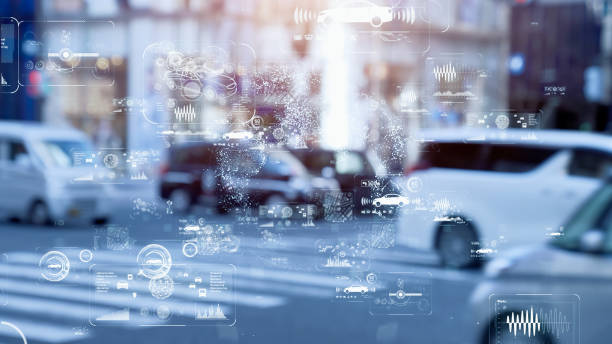
Imagine a city where traffic flows seamlessly, even during rush hours.
Picture a transportation system that adapts to changing conditions in real-time, minimising delays and congestion.
This isn’t just a vision of the future but it’s the reality that IoT (Internet of Things) is making possible today.
In this blog post, we’re diving deep into the world of real-time traffic management systems powered by IoT.
From the bustling streets of urban centres to the tranquil roads of rural areas, IoT is revolutionising how we navigate our world.
Let’s hit the road and explore how this transformative technology is shaping the future of mobility.
All You Should Know About IoT in Traffic Management

At its core, IoT is about connecting everyday objects to the internet and enabling them to collect and exchange data.
Now, imagine this concept applied to traffic management. Picture traffic lights, cameras, sensors, and even vehicles all interconnected, communicating, and sharing information in real-time.
According to Rishabhsoftware.com, this interconnectedness forms the bedrock of a real-time traffic management system, creating an intelligent network that can respond to changing conditions instantaneously.
The Role of Sensors and Data in Smart Mobility
Researchgate.com says sensors are the eyes and ears of an IoT-enabled traffic management system.
These devices are strategically placed across roadways to monitor various aspects of traffic, such as vehicle flow, speed, and density.
For instance, cameras capture live footage, while radar and lidar sensors measure distances between vehicles.
This data, once collected, is analysed in real-time to detect traffic congestion, accidents, and even adverse weather conditions.
Turning Data into Action: How AI Makes Roads Smarter
But what good is data without actionable insights? This is where AI (Artificial Intelligence) comes into play.
AI algorithms process the incoming data, identifying patterns and anomalies that might indicate congestion or incidents.
Think of AI as the brain behind the operation, making split-second decisions to optimise traffic flow.
Traffic lights adjust in real-time, directing traffic away from bottlenecks, while dynamic signage updates drivers on conditions ahead.
Integration and Connectivity
To achieve a fully functional real-time traffic management system, integration is key.
Various components, from traffic lights and sensors to centralised control centres, need to communicate seamlessly.
This requires robust connectivity infrastructure, often utilising wireless networks to ensure a continuous flow of information.
It’s like constructing a digital highway that enables data to flow smoothly between devices and systems.
Benefits of IoT-Enabled Traffic Management
The benefits of IoT-powered traffic management extend far beyond just smoother commutes.
Reduced congestion means less time spent idling in traffic, leading to lower fuel consumption and fewer emissions.
Additionally, real-time response to accidents and incidents enhances road safety, potentially saving lives.
Smart traffic management can even influence urban planning, as data insights help design more efficient road networks.
Real-World Applications of IoT Traffic Management
IoT-enabled traffic management isn’t just a concept—it’s already being implemented in cities around the world.
For instance, Singapore’s “Smart Mobility 2030” initiative aims to transform the city into a model for sustainable urban transportation.
The system utilises real-time data to optimise traffic signal timings, predict traffic flow, and even charge tolls based on road demand.
Similar initiatives are taking root in cities like Barcelona and London, showcasing the global shift toward smarter mobility solutions.
Overcoming Challenges and Concerns
Of course, no innovation comes without its challenges.
IoT-enabled traffic management systems face hurdles like data security and privacy concerns.
Ensuring that data collected from sensors and cameras is securely transmitted and stored is paramount.
Additionally, concerns about potential data misuse and surveillance must be addressed to gain public trust in these technologies.
Okay guys, now let us look into some frequently asked questions (FAQs) about How to build a real-time traffic management system with IoT.
Is IoT traffic management limited to urban areas?
Not at all! While IoT traffic management has significant impacts on urban congestion, its benefits extend to rural areas as well.
By using data to optimise traffic flow on highways, rural roads, and even remote areas, IoT can make journeys smoother and more efficient everywhere.
How does real-time data help reduce traffic congestion?
Real-time data from IoT devices, such as sensors and cameras, provide insights into current traffic conditions.
This data allows traffic management systems to identify congestion points, adjust traffic signals, and reroute vehicles, ultimately minimising traffic jams and reducing delays.
What types of sensors are used in IoT traffic systems?
IoT traffic systems employ a variety of sensors, including video cameras, radar sensors, lidar sensors, and even mobile apps that collect data from smartphones.
These sensors monitor traffic flow, vehicle speed, and road conditions, helping the system make informed decisions.
Can IoT traffic management adapt to changing weather conditions?
Absolutely. Weather data, gathered from various sources and integrated into the system, enables traffic management to anticipate how weather conditions might affect traffic patterns.
With this information, the system can proactively adjust traffic signals, divert traffic, and notify drivers about hazardous conditions.
How does AI improve emergency response in traffic incidents?
AI algorithms can analyse real-time traffic data to quickly detect accidents, road closures, or other incidents. This information can then be relayed to emergency services for faster response times.
Additionally, AI can optimise traffic flow around the incident, ensuring that emergency vehicles reach the scene efficiently.
Conclusion
In conclusion, the road to smarter traffic management is paved with innovation and interconnectedness.
IoT’s ability to gather, process, and act upon real-time data is transforming how we navigate our cities and roadways.
By creating a harmonious synergy between sensors, data, and AI, IoT-powered traffic management systems are ushering in an era of more efficient, safer, and sustainable mobility.
The journey has only just begun, and the destination is a world where traffic jams are a thing of the past and every road leads to a smoother commute.
So buckle up, because the future of transportation is taking a different route like one powered by IoT.








